Been waiting all year for new hardware releases from Google? Great news — the Pixel 7 series is finally here! Though the base Pixel 7 is still a great choice, the Google Pixel 7 Pro is the device everyone’s rushing to pre-order, with its powerful specs, sleek design, and upgraded processor.
But with so many smartphones hitting the market, how do you know which new device to invest your hard-earned cash in? If you’re considering upgrading from the Pixel 6 Pro, it’s worthwhile noting this is more of an iterative update, and there’s not much to separate these two smartphones. We’re here to help you decide whether to upgrade or invest in Google’s latest flagship by comparing the Pixel 7 Pro to the Pixel 6 Pro across several core categories. So before you make that decision to upgrade or buy the new Pixel 7 Pro, keep reading.
Specs
| Google Pixel 7 Pro | Google Pixel 6 Pro | |
| Size | 162.9 x 76.6 x 8.9mm (6.4 x 3.0 x 0.3 inches) | 163.9 x 75.9 x 8.9mm (6.45 x 2.99 x 0.35 inches) |
| Weight | 212 grams (7.5 ounces) | 210 grams (7.41 ounces) |
| Screen size | 6.7-inch OLED with 10-120Hz | 6.7-inch OLED with 10-120Hz |
| Screen resolution | 3120 x 1440 pixels (512 ppi) | 3120 x 1440 pixels (512 ppi) |
| Operating system | Android 13 | Android 13 |
| Storage | 128GB, 256GB, 512GB | 128GB, 256GB, 512GB |
| MicroSD card slot | No | No |
| Processor | Google Tensor G2 | Google Tensor |
| RAM | 12GB | 12GB |
| Camera | 50-megapixel wide, 12MP ultrawide, and 48MP telephoto rear
10.8MP front |
50MP wide, 12MP ultrawide, and 48MP telephoto rear
11.1MP front |
| Video | 4K at up to 60 fps, 1080p at 60 fps | 4K at up to 60 fps, 1080p at 120 fps |
| Bluetooth version | Bluetooth 5.3 | Bluetooth 5.2 |
| Ports | USB-C 3.2 | USB-C 3.1 |
| Fingerprint sensor | Under-display, optical sensor | Under-display, optical sensor |
| Water resistance | IP68 | IP68 |
| Battery | 5,000mAh
30W wired charging (charger sold separately) 23W wireless charging Reverse wireless charging |
5,003mAh
30W wired charging (charger sold separately) 23W wireless charging Reverse wireless charging |
| App marketplace | Google Play Store | Google Play Store |
| Network support | All major carriers | All major carriers |
| Colors | Obsidian (black), Snow (white), Hazel (dark green/gold) | Stormy Black, Cloudy White, Sorta Sunny (peach) |
| Price | Starting at $899 | Starting at $649 |
| Buy from | Google, Amazon, Best Buy | |
| Review score | News | 4 out of 5 stars |
Design, display, and durability

At first glance, the Pixel 7 Pro looks pretty similar to the Pixel 6 Pro, keeping the same polished aluminum frame, smooth glass back, and prominent camera bar. This time around, though, the bar is aluminum and varies in color depending on the model color of choice, which we think looks pretty sleek. Both devices have the same 6.7-inch 120Hz OLED display, and adaptive refresh rate. It’s worth noting the Pixel 7 Pro is a hair heavier at 212 grams compared to the Pixel 6 Pro’s 210 grams, but this difference is so slight as to be unnoticeable.
Both phones also pack an IP68 rating, so you can safely submerge them in fresh water up to around 10 feet for 30 minutes — though we don’t recommend taking your Pixel to the pool. Both are also resistant to dust and foreign particles. The Pixel 7 Pro comes in Obsidian (black), Snow (white), and Hazel (a sophisticated green/gold), while the Pixel 6 Pro comes in Stormy Black, Cloudy White, and Sorta Sunny (peach).
Though the camera bar adds a pleasing pop of color on the Pixel 7 Pro, this round’s too close to call, so it’s a tie.
Winner: Tie
Performance, battery life, and charging
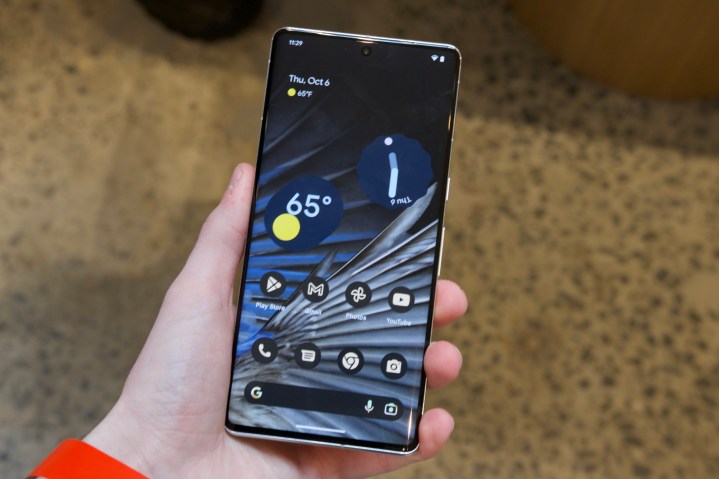
Here it is, the main reason to upgrade to the Pixel 7 Pro: that powerful processor. The Pixel 7 Pro packs Google’s latest Tensor G2 SoC, while the Pixel 6 Pro has the older Google Tensor chip. According to Google, the Tensor G2 is faster and more efficient than the base Tensor chip, though in reality, both devices are unlikely to struggle with anything you throw at them, from multi-tasking to playing the most demanding Android games. Both the Pixel 7 Pro and Pixel 6 Pro pack in 12GB of RAM, with up to 512GB of onboard storage — and, as expected, that’s not expandable.
On to battery life, things are pretty similar, with the Pixel 7 Pro’s 5,000mAh battery and the Pixel 6 Pro’s 5,003mAh battery practically identical. Both batteries should easily see you through 24 hours of normal use, and with Extreme Battery Saver mode, you could push battery life to 72 hours. In testing, we were impressed with the Pixel 6 Pro’s battery life, so we’re expecting to feel equally positive about the Pixel 7 Pro, though we’ll need to spend more time with the phone for our full review before drawing any conclusions.
You’ll be back up and running quickly with both phones supporting 30W fast charging, taking the battery to 50% in around half an hour — though there’s no charger in the box. Both devices also support 21W wireless charging and reverse wireless charging for your earbuds and accessories.
This round is close again, but we’re giving it to the Pixel 7 Pro thanks to Google’s powerful Tensor G2 chip.
Winner: Google Pixel 7 Pro
Cameras
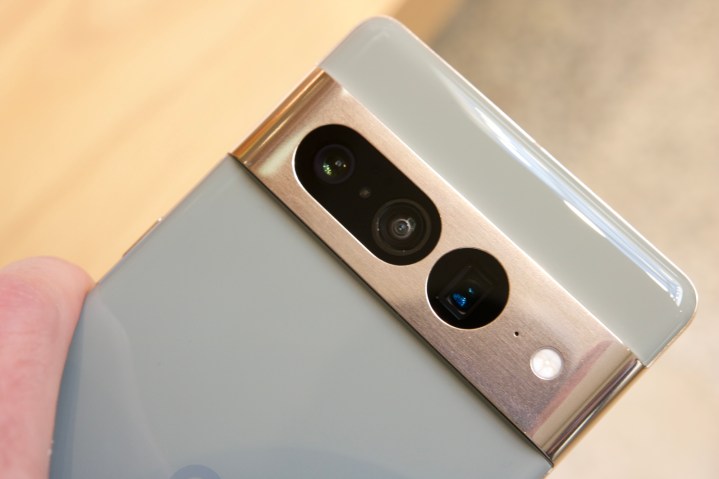
On paper, the camera hardware across these two phones is identical — Google’s camera experience has been excellent for a while now, so the company is sticking with what it knows. That means the same rear camera setup: 50-megapixel wide, 12MP ultrawide, and 48MP telephoto rear lenses. This time around though the lenses get a boost from the Tensor G2, meaning the Pixel 7 Pro likely offers improved image processing.
On the front, the 11MP selfie cam remains unchanged, supporting 4K video recording the same as the Pixel 6 Pro. Notably, the Pixel 7 Pro’s front-facing camera now supports Face Unlock on the lock screen. Though this feature was planned for the Pixel 6 Pro, it never happened, reportedly due to battery concerns.
There are some notable new features on the Pixel 7 Pro. Google increased the ultrawide camera’s sensor size by 25% to enable Macro mode, plus there’s enhanced zoom up to 30x, and Cinematic Blur, the equivalent to the iPhone’s Cinematic mode, which adds a shallow depth of field effect to your videos. There’s also Photo Unblur, which, as the name suggests, can unblur your photos using AI and machine learning.
We haven’t yet spent enough time with the Pixel 7 Pro to form a decision based on actual use, so the verdict here may change once our full review comes out. Based on the spec sheet, though, we’re happy to give this round to the Pixel 7 Pro for now.
Winner: Google Pixel 7 Pro
Software and updates
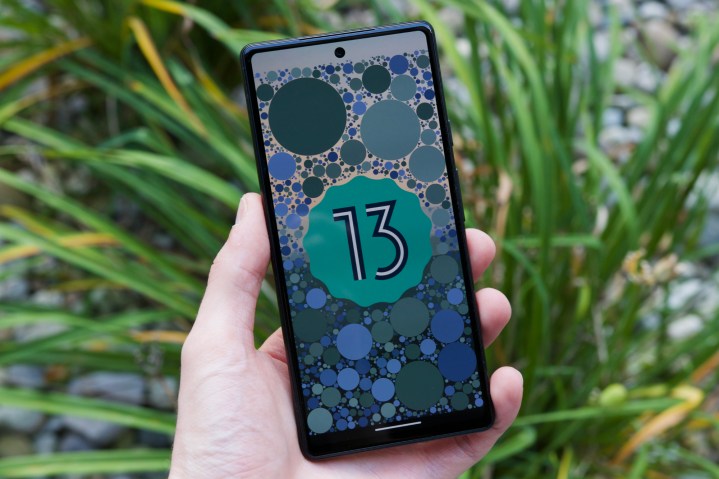
Both the Pixel 7 Pro and Pixel 6 Pro run Android 13, though the Pixel 7 Pro is the first device to run Google’s latest OS out of the box. Google promises up to five years of security updates and three years of major Android updates, making both phones an excellent, future-proof choice. With that said, the Pixel 6 Pro has been out for a year, so it will stop receiving updates about a year before the Pixel 7 Pro.
We could call this round a tie, but since you’ll get an extra year of updates for the Pixel 7 Pro, we’re giving it the crown.
Winner: Google Pixel 7 Pro
Special features
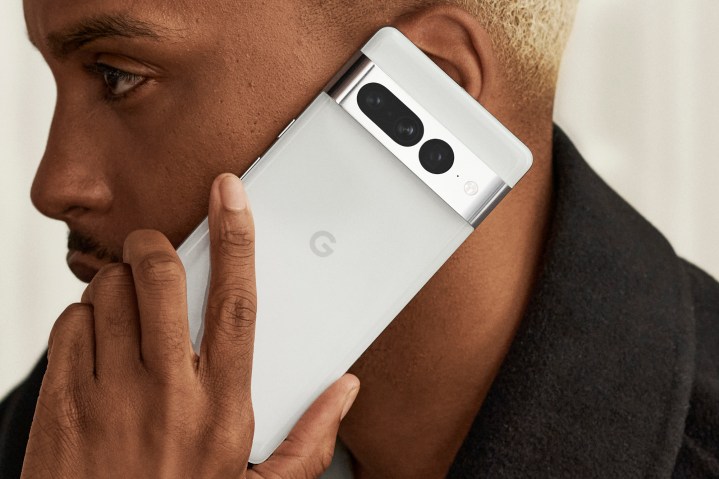
With the Pixel 7 Pro being more of an iterative update to the Pixel 6 Pro, there aren’t that many special features to set the two devices apart. Google Assistant is smarter in the Pixel 7 Pro, and the phone suggests relevant emoji when you’re voice texting, great if you’ve forgotten the exact name of the one you want. There are also some new software tricks this time around, like Clear Calling. Though not available yet, this feature promises to use the Tensor G2 chip to boost the caller’s voice and reduce background noise
The Pixel 7 Pro’s front-facing camera now supports Face Unlock, a feature that never made it to the Pixel 6 Pro, so you won’t have to scan your fingerprint or enter a passcode to unlock your phone. It’s worth noting here that you can’t use Face Unlock in place of fingerprint scanning for approving purchases or authentication in banking apps.
This round was close, but ultimately the Pixel 7 Pro wins out thanks to smarter Google Assistant, neat new software tricks, and support for Face Unlock.
Winner: Google Pixel 7 Pro
Price and availability
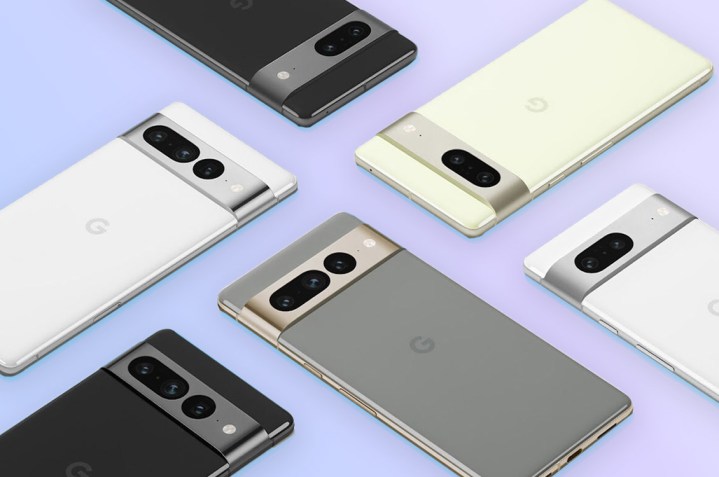
The Pixel 7 Pro is , starting from $899 for the 128GB variant. Trade-in any qualifying phone and you’ll get up to $750 off. The phone goes on general sale on October 13 and supports all major carriers.
You can from third-party retailers such as Amazon or Best Buy, starting from $640 for the 128GB variant. The Pixel 6 Pro is also available on all major carriers.
Overall winner: Google Pixel 7 Pro
Though the updates to the Pixel 7 Pro are iterative, Google’s still done enough to make its latest flagship a clear winner in comparison to the Pixel 6 Pro. With the powerful Tensor G2 processor, Face Unlock, and plenty of optimizations and new features — plus the gorgeous new Hazel colorway — it’s the better pick of the two phones. That said, the Pixel 6 Pro is still a solid choice, and if you’re already the proud owner of a Pixel 6 Pro, there really isn’t any need to spend your hard-earned cash on an upgrade.
Editors’ Recommendations




